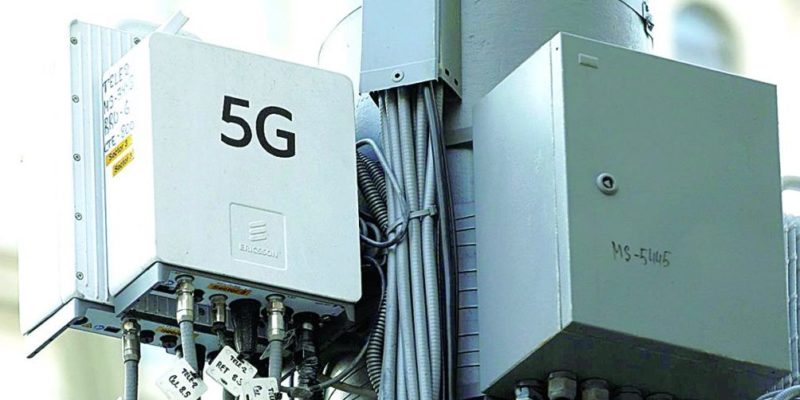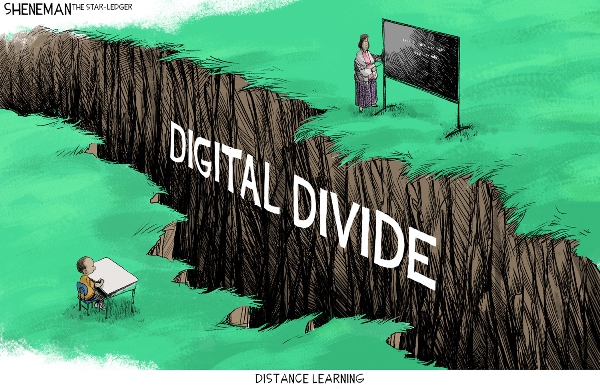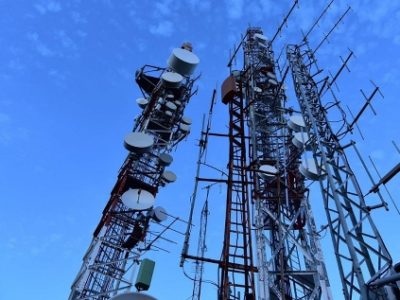By Sonny Aragba-Akpore
Despite spirited efforts by African countries to join the global community in the adoption of fifth generation (5G) technology, and the race for better internet services, less than six percent of the sub-Saharan population has access to the technology.
RELATED: Botched 5G services and the Wi-Fi gamble in Nigeria
While many countries are already providing robust services, Africa remains on the outskirts of 5G services. The countries in Africa that have launched 5G networks, include South Africa with its roll out. In March 2022, when the Independent Communications Authority of South Africa (ICASA) sold spectrum across several bands.
In Nigeria, MTN rolled out commercial 5G services in Lagos in 2022. It has also other rolled out in Abuja, Port Harcourt, Ibadan, Kano, Owerri, and Maiduguri among others. MTN Congo announced that it was the first country in Central Africa to deploy 5G.
In Botswana, Orange deployed 5G technology to provide new services in the Gaborone and Francistown regions. Other countries in Africa that have launched 5G Fixed Wireless Access (FWA) services include: Angola, Kenya, Zambia, and Zimbabwe.
Analysts say “5G’s potential is growing due to its ability to deliver fibre-like speeds. However, there are still challenges in the region and they are numerous. Urban areas are reaching their maximum capacity whereas a large portion of the population lives in rural areas. This explains why 5G adoption in the sub-Saharan region is currently below six percent “
Analysts report that 5G deployment in Africa faces many challenges, including Spectrum assignment, regulatory issues, infrastructure, security, financial resources among others. “Spectrum is a limited resource that is already in use by other services, such as TV broadcasters and satellite operators. Governments need to open up frequencies and grant 5G licenses at reasonable prices. “
Infrastructure, Regulatory and security challenges
Infrastructure is another major challenge. “5G networks require a large initial investment, including expensive devices, antennas, and Radio Access Network (RAN) hardware. The infrastructure needs to be fiberized to support 5G services.
Regulatory conditions also serve as challenges to deployment. For instance, “regulatory authorities may not have started the process for licensing and granting frequencies in the right portion “
“Most of the equipment and devices required for 5G deployment need to be imported.”
There are also security challenges that make 5G technology vulnerable to cyber security threats, such as tracking calls and exposing user locations. Adoption of 5G deployment may take longer than expected across the continent. It may take even longer time in some countries as a result of socioeconomic considerations especially in terms of 5G pricing structures that need to be compatible with the economies of African countries.
5G and the Urban/Rural drift
Urban/rural drift is listed as a major challenge more so since urban areas may have reached maximum capacity due to site density and available spectrum. Analysts list some strategies to address these challenges as “adapting legacy systems. Others are collaborating to enhance infrastructure, Future-proofing networks, reusing existing spectrum assets, and releasing low-band frequencies alongside mid-band frequencies. “
The International Telecommunication Union (ITU) says 5G coverage reached 40% of the world’s population in 2023. But there is an uneven coverage and distribution with developed countries having more coverage than low-income countries.
In Europe, 68% of the population is covered. Americas had 59% of the population covered while Asia-Pacific has 42% of the population covered as at 2023. Arab States have 12% of the population covered. Commonwealth Independent of States (CIS) have 8% of the population covered.
ITU figures show Africa’s coverage rose to 6% of the population by 2023 . The ITU also notes that 90% of the world’s population is covered by 4G. But 55% of people without access to 4G live in low-income countries. In low-income countries, 3G is often the only technology available to connect to the Internet.
International regulations and global standards
The ITU develops and adopts international regulations and global standards. This is to enable the harmonization and implementation of broadband mobile networks.
The world’s first commercial 5G services launched in 2019 in South Korea. The US, UK, Germany, and China quickly followed. In most of the world, 5G is now blossoming.
The US now reports 5,000 cities covered. China says it has over 250 million 5G subscriptions served by two million 5G base stations. Network provider Ericsson says there will be one billion connections worldwide by the end of this year, beating 4G’s rollout by two years
Africa is falling behind in 5G
With Ericsson predicting five billion 5G subscribers by 2028, the equivalent of 60 percent of the world’s population, it is possible to think that the whole world is adopting 5G – but we may be wrong. One entire continent is falling behind in 5G. In Africa, around a dozen nations have launched services (Botswana, Kenya, Mauritius, Madagascar, Nigeria, Seychelles, South Africa, Tanzania, Togo, Zimbabwe, and Zambia) but Africa is a patchwork of 54 countries.
And penetration is predicted to be slow. By 2027, Ericsson predicts that 80 percent of phone users in Europe will have 5G service. At the same time, 5G subscriptions in Africa, home to 1.4 billion people, will hit just 10 percent. Why will so few people in Africa get access to 5G services?
China, South Korea, the United Kingdom, Germany, and the United States are the leading countries with robust 5G coverage in the world.
Since the first commercial launches of the fifth generation of mobile networks in late 2018, these five countries have emerged as leaders because multiple companies in these countries have deployed networks and are selling compatible devices. Countries including Switzerland and Finland are up and comers in 5G development, as they have limited deployment.
5G in China
In China there are three Companies leading in deployment. The world’s largest 5G network was launched by the three largest Chinese network operators Oct 31, 2019, according to the state-run news agency Xinhua. These are China Mobile, China Unicom, and China Telecom which all activated their networks in less than five months after they were issued 5G licenses. Each of the network operators offered their 5G services at $18 per month in 50 Chinese cities at the beginning of the launch.
“What we are seeing is a concerted effort by the Chinese — the operators, vendors, and government regulators — to deploy 5G as quickly as possible,” Chris Nicoll, principal analyst at ACG Research, pointed this out in a Nov 1, 2019 SDxCentral article.
With all of these players working together, the three network operators collectively deployed nearly 86,000 5G base stations. These peaked to over 130,000 by the end of 2019. The latter number breaks down into China Unicom and China telecom, with each planning to install 40,000 base stations, and the market leader China Mobile to install 50,000. This was the projection by 2019 but they have since overshot this by the beginning of 2024.
The Global System of Mobile Association (GSMA)expects 36% of China’s mobile users to be using 5G by 2025. That’s about 600 million subscribers, who would also make up 40% of the entire global 5G market by that year.
This is all despite efforts made by the United States government to hamper the progress of Chinese vendors, though those efforts may affect how Chinese companies may expand into the global market.
South Korean 5G market
In South Korea,SK Telecom and Korea Telecom run as the main competitors for the South Korean 5G market. SK Telecom acquired spectrum in the 3.5 GHz and 28 GHz frequencies to prepare for deploying 5G.
In April of 2019, the Enterprise claimed to be the first mobile carrier in the world to launch 5G services to work on 5G smartphones. SK Telecom asserted an edge over rival Verizon, as the former launched 5G services available at the same time as Samsung Galaxy S10 5G smartphone launched in South Korea. Verizon launched mobile 5G services in the U.S. before a 5G enabled smartphone was available to U.S. consumers.
SK Telecom has also conducted tests with a 5G Standalone (SA) Core (a core not reliant on the 4G network) for their 5G network in cooperation with Samsung Electronics.
In early 2017, KT rolled out a 5G trial network ahead of the 2018 Winter Olympics in Pyeongchang, South Korea. However, the network was used primarily for demonstrations as it was not accessible by attendees’ smartphones. At the time, the reception was lukewarm. Since then, KT’s network has expanded to cover the country’s most populated areas. The operator currently claims to have “the world’s first nationwide commercial 5G wireless network.”
Consumers have played a crucial role in turning South Korea into a 5G country. According to research from IHS Markit, South Korean consumers have been purchasing 5G devices so quickly that stores can’t stay in stock. It only took 69 days for South Korea to reach one million subscribers to 5G services after the initial network launch.
The UK 5G market
The United Kingdom’s four providers launched their services throughout 2019. EE, Vodafone UK, Three UK, and O2 UK launched commercial deployments in the U.K. These operators are using equipment namely from Ericsson, Nokia, and Huawei.
O2 UK is an exception in that it’s not using Huawei equipment, despite running 5G radio access network (ran) tests with it. Three UK announced an unlimited data service that is speed-cap free at no extra cost.
To speed up rollouts of active 5G equipment, Vodafone UK reached a deal with O2 UK to share equipment, which can be seen with radio antennas on joint network sites.
Cornerstone Telecommunications Infrastructure also manages shared facilities for operators. Vodafone reached similar agreements in Italy and Spain for shared infrastructure.
In Germany, Vodafone and Deutsche lead 5G market
In Germany, Vodafone and Deutsche Lead 5G Market. In 2019, Vodafone Germany and Deutsche Telekom Germany launched 5G services in several cities. Vodafone Germany started with 20 cities and municipalities (including Cologne and Dusseldorf). Deutsche Telekom Germany, on the hand, launched in only six (including Berlin and Munich). Vodafone plans to offer 5G services for $5.61 less per month than Deutsche Telekom.
When the German government auctioned off spectrum bands, a new player, 1&1 Drillisch, came into the picture by bidding $1.2 billion for 70 megahertz of spectrum. However, the company waited till 2021 to use the new spectrum.
USA 5G FAST Plan
In Sept. 2018 the Federal Communications Commission of the USA announced its 5G FAST Plan in an effort to advance the country’s position among the countries that have deployed 5G networks.
Part of this plan included spectrum auctions. In March 2016, prior to the official start of the 5G FAST plan, the FCC hosted an “incentive auction.” With this, it began repurposing spectrum and opening up low-band spectrum for wireless Broadband that can be used for 5G networks. A second auction of the upper 37 GHz, 39 GHz, and 47 GHz bands was set for 2019. Money raised from these auctions was used to bring high-speed Broadband to the rural U.S.
T-Mobile premiers SA 5G network with 5G core
In August 2020, T-Mobile US became the first telecom operator in the world to launch an SA 5G network with a 5G core. This came after a merger with Sprint was completed in April 2020. This is significant, in that T-Mobile US surpassed AT&T, Verizon, and SK Telecom. AT&T was the expected winner of the race to 5G in the U.S. and SK Telecom was the favourite to have the world’s first SA 5G network. Both had plans to have a network with SA 5G architecture by early 2020 but did not meet those benchmarks.
AT&T and Verizon are still part of the 5G conversation in the U.S., although it’s debated which of those two was truly first to market. In December 2018, AT&T was the first U.S. carrier to launch a standards-based mobile 5G network. It is servicing a dozen cities, albeit without any 5G-enabled devices. In October 2018, Verizon was the first to have a non-standards-based deployment that was actually a fixed Broadband network in four cities.
In March 2019, Verizon turned on its standards-based 5G network in Minneapolis and Chicago, also before mobile 5G devices were available. Verizon began selling Samsung Galaxy S10 5G on May 16, 2019 and claims it will have 5G in 30 cities by the end of 2019. As of August 2019, AT&T had deployed 5G in 21 cities. It claimed the 5G network would be deployed in 30 states by the end of 2019.
2030: Racing to universal coverage
The ITU continues to release information on standardizations that could cushion speedy deployment across global communities and markets especially in the race to actualise universal coverage by 2030 to meet and actualise the Sustainable Development Goals (SDG) target.
Aragba-Akpore is a member of THISDAY Editorial Board





























